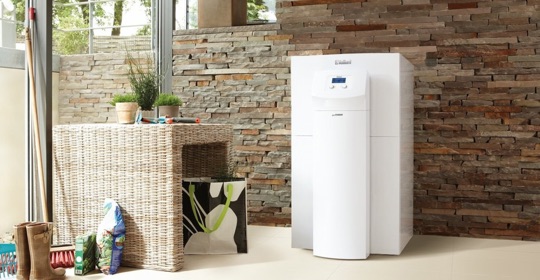A ground source heat pump circulates a mixture of water and antifreeze around a loop of pipe, called a ground loop, which is buried in your garden.
Heat from the ground is absorbed into the fluid and then passes through a heat exchanger into the heat pump.
The ground stays at a fairly constant temperature under the surface, so the heat pump can be used throughout the year.
The length of the ground loop depends on the size of your home and the amount of heat you need.
How do ground source heat pumps work?
Heat from the ground is absorbed at low temperatures into a fluid inside a loop of pipe (a ground loop) buried underground. The fluid then passes through a compressor that raises it to a higher temperature, which can then heat water for the heating and hot water circuits of the house.
The cooled ground-loop fluid passes back into the ground where it absorbs further energy from the ground in a continuous process as long as heating is required.
If there is enough space, the collector loop can be laid horizontally in a trench about a metre or so below ground. Where there isn’t room to do this you can drill vertical boreholes to extract heat from much further down, typically 90 – 160 metres deep. The space you need for a horizontal loop, and the depth you need for a borehole, will depend on many factors – your heat pump installer will design the collector array based on local conditions and the heat requirements of your home.
Heat pumps have some impact on the environment as they need electricity to run, but the heat they extract from the ground, the air, or water is constantly being renewed naturally.
